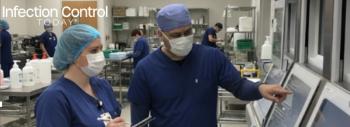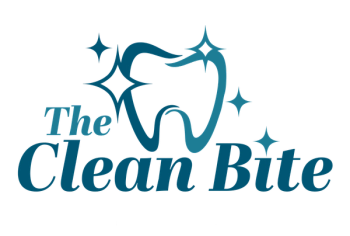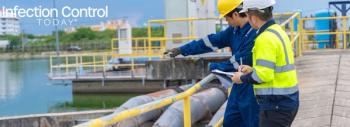
- Infection Control Today, March 2022, (Vol. 26, No. 2)
- Volume 26
- Issue 2
Infection Preventionists Swamped with Questions During COVID-19 in 2020
Before COVID-19, the infection prevention department got a median of 71 calls a month. When COVID-19 struck, that rose to 368 a month, with 50% of calls concerning isolation precautions, the study states.
Demand for the knowledge that infection preventionists (IPs) possess soared when COVID-19 first struck in 2020, but by just how much might surprise even IPs who worked through those initial surges. The infection prevention and control (IPC) department at the University of Iowa Hospitals & Clinics (UIHC) experienced a 500% increase in consultation calls from January 2020 to December 2020, compared to calls received in the pre-COVID-19 period of 2018 to 2019, according to a
Data were also collected in focus groups and one-on-one interviews with members of the IPC department in which they were asked to explain changes in their working conditions during the COVID-19 period.
“Our IPC program experienced a 500% increase in consultation requests,” the study concludes. “Planning for future bio-emergencies should include creative strategies to increase response capacity within IPC programs.”
UIHC, an 811-bed tertiary care center with over 200 outpatient clinics that cares for more than 36,000 patients each year, has a long tradition of infection prevention; it launched its IPC department in 1969.
When COVID-19 struck, phone consultations about SARS-CoV-2 elbowed other clinical considerations out of the way. Calls about non-COVID-19 related matters decreased substantially during the period. In the pre-COVID-19 period, the IPC department received a median of 71 calls a month. During the COVID-19 period, that increased to 368 calls a month, and about 50% of those calls concerned isolation precautions.
“Infection preventionists reported that the ambiguity and conflicting guidance during the pandemic were major challenges,” the study states.
Calls concerned the following categories:
- inpatient services
- outpatient services
- laboratory services
- department of public health
- employee health
- environmental/engineering
- other
IPC personnel were asked about:
- surveillance
- isolation precautions
- testing results
- exposures, for both health care professionals and patients
- environmental services matters
- handling outside requests from public health departments or other medical centers
The IPC department also kept an eye on non-COVID-19-related problems. Changes in incidence were monitored for health care-acquired infections (HAIs) as follows:
- central line-associated bloodstream infections (CLABSI) per 1000 central-line days
- catheter-associated urinary tract infections (CAUTI) per 1000 catheter days
- Clostridioides difficile infections (CDI) per 10,000 patient days
CLASBIs increased significantly during the COVID-19 period, to 1.8/1,000 per central line-days. CAUTIs and CDIs did not show a statistically significant increase.
Along with HAI monitoring, the IPC department also oversaw infection control data analysis, policy writing, outbreak investigation, education, and collaboration with other departments. IPC also monitored hand hygiene, social distancing, and masking.
Monitoring, though, was not foremost on the minds of those who contacted the IPC department. “While surveillance is a core responsibility of IPC programs, consuming almost 40-45% of IP time, surveillance issues represented less than 1% of IPC program calls in our study.”
As the calls increased, the IPC department went from taking calls on a 7-days-a-week schedule to 12-hour blocks of time. “This scheduling change allowed us to designate an IP to night calls, permitting the team to have rest intervals,” the study states. “Also, we established a call center and trained staff volunteers from the departments of nursing, quality improvement, and research to help answer daytime calls.”
The IPC department also created a frequently asked questions document to help with calls from the public and enlisted the UIHC integrated call center to take calls from the community. The IPC department grew from 7 to 9 fulltime IPs.
“We also began using cycle threshold (Ct) values paired with the assessment of symptoms and serology to evaluate the need for isolation precautions,” the study states. “Ct values were only available to IPC members, requiring us to be consulted when patients were positive for COVID-19 and asymptomatic.”
An alert built into the electronic medical record allowed clinical staff to take steps to evaluate the need for isolation precautions and what kind.
The study also notes that “remarkably” calls from the department of public health actually decreased by 75% during the COVD-19 period, perhaps because of allocation of public resources.
The study concludes that “in addition to supporting a proactive COVID-19 response, our IPC program experienced a substantial increase in consultation requests during the COVID-19 period. Most calls were regarding COVID-19 related issues, and we observed a decline in communication regarding non-COVID-19 issues. This may reflect less frontline emphasis on HAI prevention. As the COVID-19 pandemic transitions to endemicity, IPC programs should be strengthened by ensuring adequate staffing, compensation, and creative work modalities.”
Articles in this issue
almost 4 years ago
Diversity Can Be Best Ally for Infection Preventionistsalmost 4 years ago
Bug of the Month: Trust Me, I Pose No Threat to You at Allalmost 4 years ago
When COVID Turns 2: Infection Preventionists Take Stockalmost 4 years ago
Long COVID Will Linger Even After the Pandemic Leavesalmost 4 years ago
Flu or Omicron? Diagnosis Must be Done Quicklyalmost 4 years ago
Infection Control in Outpatient Settings: Old Challenges, New Realitiesalmost 4 years ago
Make Personal Protective Equipment Fit Sterile Processingalmost 4 years ago
COVID-19 Reinfections in Early Stage of Pandemic Examinedalmost 4 years ago
Mask Fit Testing Experiment Uncovers Different Levels of ProtectionNewsletter
Stay prepared and protected with Infection Control Today's newsletter, delivering essential updates, best practices, and expert insights for infection preventionists.





